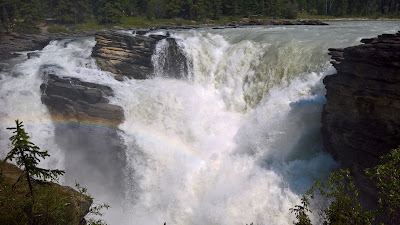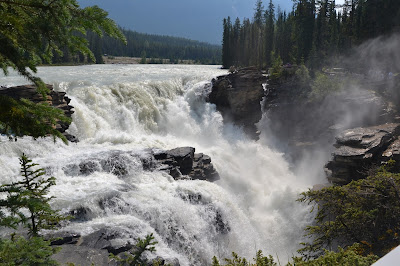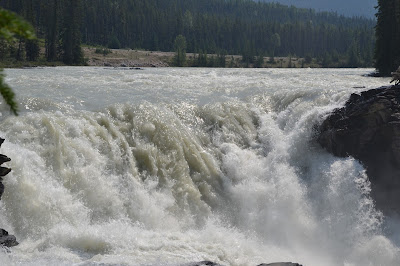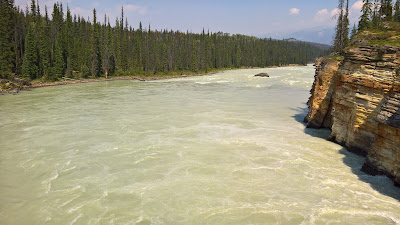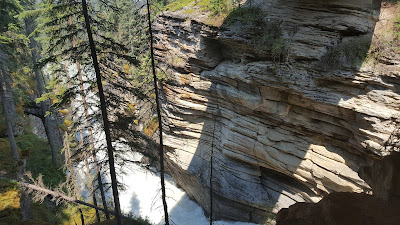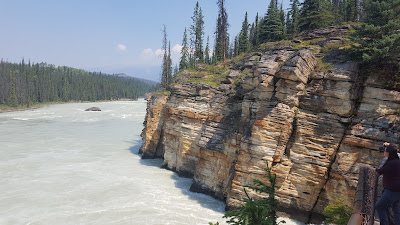CANADA – ALBERTA – JASPER PARK – Athabasca Falls (*****)
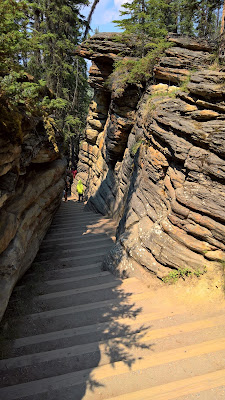 For Polish version please click here.
For Polish version please click here.
This rainbow miracle of nature is
the first – among here described - stop on the journey from Jasper to Banff.
The parking lot is located on the right side of the road, 30 km from Jasper and
262 km from Banff (behind Athabasca Pass). A short walk along established easy
trails takes about 30 minutes. It gives a great opportunity to admire the
waterfall from different perspectives and learn about it’s past. An
abandoned river bed with the flight of stairs cut in it makes unearthly impression.
Standing on one of the view decks, visitors can observe a rainbow, feel the
cold miss or even get a little bit wet. 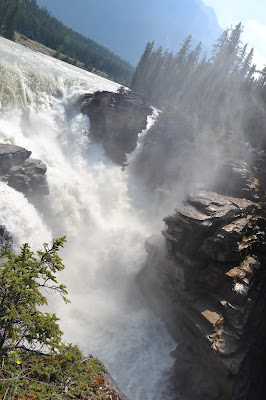
The waterfall is 23 m high. It’s strength comes from a huge capacity of water falling down from the quartzite cliff. Seasonably changing colours makes it beautiful. In summer, when Athabasca River is strengthened by melting glaciers from Columbia Icefield, water runs milky white. It is caused by fine silt (known as rock flour, which also colours famous glacial lakes such as Lake Luise), the product of grinding down mountains for thousands of years. In other seasons, when the river is fed by run-off, rainwater or snowmelt and only the smallest of particles remain in the water (the ones that reflect green and blue parts of the light spectrum), the waterfall seems icy blue.
History of the Athabasca Falls starts 10.000 years ago, when Athabasca Valley Glacier inched over rocks, shearing
off chunks of hard quartzite, this way creating a cliff. A stream flowing
underneath glacier started forming the canyon. In the course of time, the
glacier receded. A stream turned into the Athabasca River. Nowadays water
pressure carves out quartzite cliff a few millimeters a year.
In the canyon – shaded from sunlight and covered by constant mist – the temperature can be up to 10 ̊C colder than the one on the trail. That is why the alpine-like environment in the canyon resembles Whistlers summit in Jasper. It still remains a mystery, where a bull trout - the only one native fish found above the falls – came from and how it managed to cross over the barrier of the cliff.
Established trails are easily
accessible and very popular. Nevertheless the waterfall is worth seeing on the
way from Jasper to Banff.
Alberta can be admired in
Vancouver (!) during a short flight over Canada.
